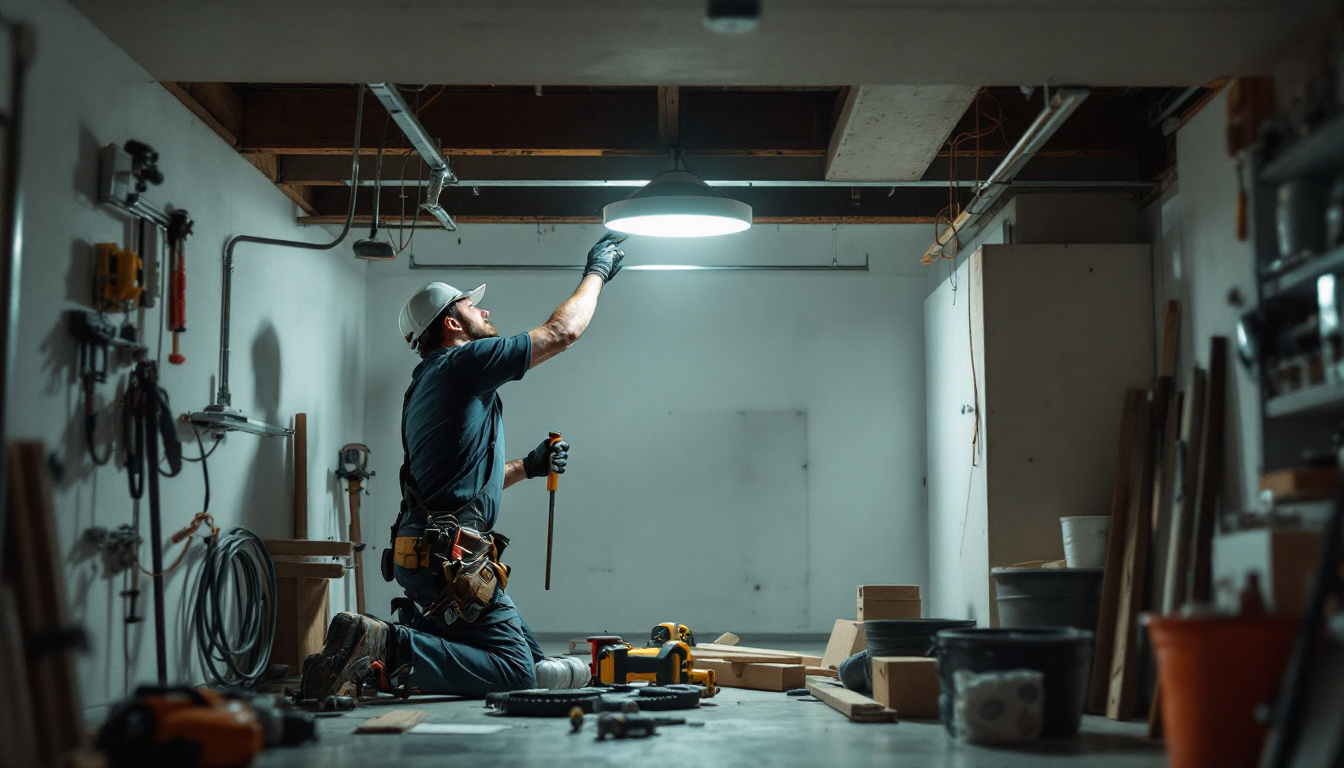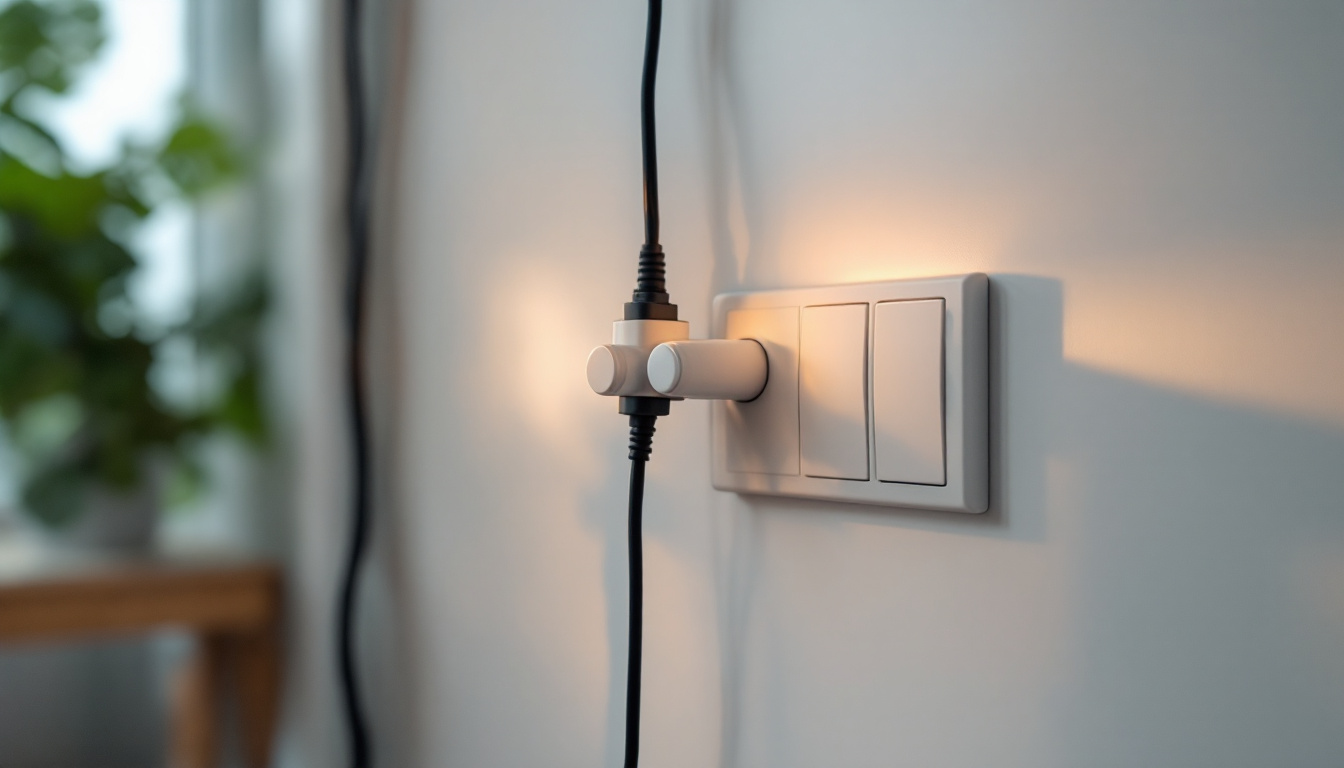
lighting contractors play a crucial role in ensuring that residential and commercial spaces are well-lit, functional, and aesthetically pleasing. One essential aspect of this profession is understanding the various components of lighting fixtures, particularly the bulb base. This article delves into the standard bulb bases used in the industry, providing key insights and tips for lighting contractors to enhance their expertise.
The bulb base is the part of the light bulb that connects it to the fixture. It plays a significant role in ensuring that the bulb is securely held and properly connected to the electrical supply. There are numerous types of bulb bases, but several have become standards within the industry. Understanding these bases is vital for any lighting contractor, as it directly affects the compatibility and functionality of lighting installations.
There are several common types of bulb bases that lighting contractors should be familiar with. Each type has its specific applications and benefits, making it essential to know which base to use in different scenarios.
Selecting the correct bulb base is crucial for several reasons. First, it ensures safety by preventing electrical mishaps that can arise from incompatible fixtures. Second, using the right base can enhance the performance of the lighting system, ensuring optimal brightness and energy efficiency. Lastly, it allows for easier maintenance and replacement of bulbs, ultimately saving time and reducing costs for clients.
In addition to the practical aspects, the choice of bulb base can also influence the aesthetic of a space. For instance, the sleek design of GU10 bases often complements modern interior designs, while the classic Edison screw base can evoke a vintage charm. Furthermore, as energy-efficient lighting solutions gain popularity, understanding the nuances of bulb bases becomes even more critical. Many LED bulbs are designed to fit specific bases, and choosing the wrong one can lead to subpar performance or even damage to the fixture.
Moreover, advancements in lighting technology have led to the emergence of new base types, such as the G4 and G9 bases, which are commonly used in decorative fixtures and under-cabinet lighting. These bases often cater to specific applications, such as low-voltage lighting, and understanding their unique characteristics can help contractors make informed decisions that align with their clients’ needs. As the lighting industry continues to evolve, staying updated on the latest trends and base types will ensure that contractors can provide the best solutions for their projects.
When working with various bulb bases, lighting contractors should keep several key considerations in mind. These factors can significantly impact the success of a lighting installation and the satisfaction of clients.
Before selecting a bulb, it is essential to verify that it is compatible with the fixture in which it will be installed. This includes not only the bulb base but also the wattage and voltage requirements. Using a bulb that does not match the fixture can lead to flickering, reduced lifespan, or even damage to the fixture itself. Additionally, contractors should be aware of the fixture’s intended use; for example, outdoor fixtures may require weather-resistant bulbs, while dimmable fixtures necessitate bulbs specifically designed for dimming capabilities to ensure optimal performance.
With growing concerns about energy consumption and environmental impact, lighting contractors should prioritize energy-efficient bulbs. LED bulbs, for instance, offer significant energy savings compared to traditional incandescent bulbs. Understanding the energy ratings and lifespans of various bulb types can help contractors make informed recommendations to clients. Furthermore, contractors should also consider the lifecycle of the bulbs they recommend, including factors like recyclability and the presence of hazardous materials, to align with sustainability goals and promote eco-friendly practices within the industry.
Clients often have specific preferences regarding the type of lighting they want in their spaces. Some may prefer the warm glow of incandescent bulbs, while others may opt for the bright, white light of LEDs. Understanding these preferences and being able to offer suitable options based on the bulb base can enhance client satisfaction and lead to repeat business. Additionally, factors such as color temperature and brightness levels can greatly influence the ambiance of a space. For instance, a cozy restaurant may benefit from softer, warmer lighting, while a modern office may require brighter, cooler tones to enhance productivity. By engaging clients in discussions about their desired atmosphere, contractors can tailor their recommendations to create spaces that truly reflect the clients’ vision and enhance their overall experience.
Proper installation of bulbs is critical to ensure their longevity and performance. Each bulb base may require different handling and installation techniques, and being aware of these can help contractors avoid common pitfalls.
When installing bulbs with Edison screw bases, it is essential to ensure that the bulb is securely screwed into the socket. Contractors should avoid overtightening, as this can damage the base or the socket. Additionally, it is advisable to check the wattage rating of the fixture to prevent overheating. It’s also beneficial to inspect the socket for any signs of wear or corrosion, as this can affect the electrical connection and lead to flickering lights or even failure. Regular maintenance and cleaning of the socket can enhance the bulb’s performance and lifespan.
For bayonet bases, proper alignment is key. The pins must be aligned with the slots in the socket before pushing the bulb in and twisting to lock it in place. Contractors should also ensure that the bulb is not forced into the socket, as this can lead to breakage or malfunction. It’s also important to handle bayonet bulbs with care, as the glass can be fragile. Using a cloth or gloves can help prevent oils from fingers from transferring to the glass, which can cause hotspots and reduce the bulb’s efficiency. Additionally, checking the bulb for any visible damage before installation can prevent issues down the line.
GU10 bulbs require a specific installation technique. The pins must be inserted into the socket at an angle, and then the bulb should be twisted to secure it. It is crucial to ensure that the fixture is powered off during installation to prevent electrical shocks. Furthermore, it’s wise to verify that the GU10 bulb is compatible with the fixture, as some fixtures may not support certain wattages or types of GU10 bulbs. Additionally, contractors should be aware of the orientation of the bulb in relation to the fixture; improper positioning can lead to uneven lighting or glare. Regularly checking the fixture for dust and debris can also improve the overall lighting quality and efficiency of the GU10 bulbs.
The lighting industry is continuously evolving, with new technologies and trends emerging regularly. Staying updated on these changes can provide contractors with a competitive edge. As consumers become more conscious of energy consumption and environmental impact, the demand for innovative lighting solutions will only increase, making it essential for contractors to adapt and grow alongside these trends.
Smart lighting is becoming increasingly popular, with many homeowners and businesses opting for systems that can be controlled via smartphones or voice commands. These systems often require specific bulb bases that are compatible with smart technology. Lighting contractors should familiarize themselves with these products to meet client demands effectively. Furthermore, the integration of smart lighting with home automation systems allows for enhanced energy management, enabling users to schedule lighting based on their routines or even adjust brightness levels remotely, creating a more personalized and efficient lighting experience.
LED technology continues to advance, leading to the development of new bulb bases and designs. As manufacturers create more versatile and efficient bulbs, contractors should stay informed about the latest products and their applications. This knowledge will allow them to provide clients with the best options available. Additionally, the emergence of tunable white and color-changing LEDs is transforming how spaces are lit, offering the ability to alter the ambiance and mood of a room with just a few taps on a smartphone. Understanding these advancements will empower contractors to recommend solutions that not only meet aesthetic preferences but also enhance functionality.
Regulations regarding energy efficiency and lighting standards are constantly evolving. Lighting contractors must stay abreast of these changes to ensure compliance and to advise clients accurately. Understanding the implications of new regulations on bulb bases and lighting systems will be crucial for maintaining a successful business. Moreover, as governments push for stricter energy efficiency standards, contractors may find opportunities in retrofitting existing systems with more sustainable options, thus expanding their service offerings and appealing to environmentally conscious consumers. Keeping a pulse on these regulatory shifts will not only help contractors remain compliant but also position them as trusted advisors in the ever-changing landscape of lighting solutions.
Understanding standard bulb bases is an essential aspect of a lighting contractor’s skill set. By familiarizing themselves with the different types of bases, their compatibility with fixtures, and installation techniques, contractors can enhance their services and ensure client satisfaction. Additionally, staying informed about industry trends and advancements will position contractors as knowledgeable professionals in a competitive market.
Ultimately, the right bulb base can make all the difference in a lighting installation. By prioritizing safety, energy efficiency, and client preferences, lighting contractors can provide exceptional service and contribute to well-lit, inviting spaces.
Ready to elevate your lighting installations with the right bulb bases and the best products in the market? Look no further than LumenWholesale, where we provide contractors with high-quality, spec-grade lighting solutions at unbeatable wholesale prices. Our extensive selection is designed to meet the highest industry standards, ensuring reliable and high-performance lighting for every project. Plus, with free shipping on bulk orders, you can enjoy premium lighting at the best value — without hidden fees or compromises. Don’t miss out on the perfect blend of quality, affordability, and convenience. Visit LumenWholesale today and experience Wholesale Lighting at the Best Value for all your contracting needs.

Explore the top challenges lighting contractors face when installing can lights in garages.

Discover why outlet receptacles are essential for any lighting project.

Discover the essential guide to three-way light switches tailored for lighting contractors.

Explore how the choice of white outdoor lamps can significantly impact lighting contractors’ profitability.